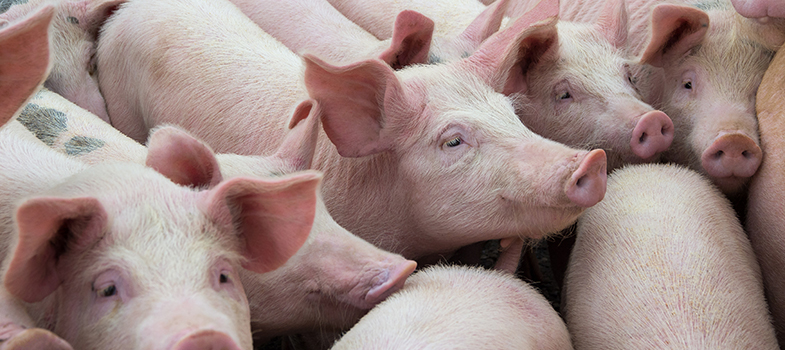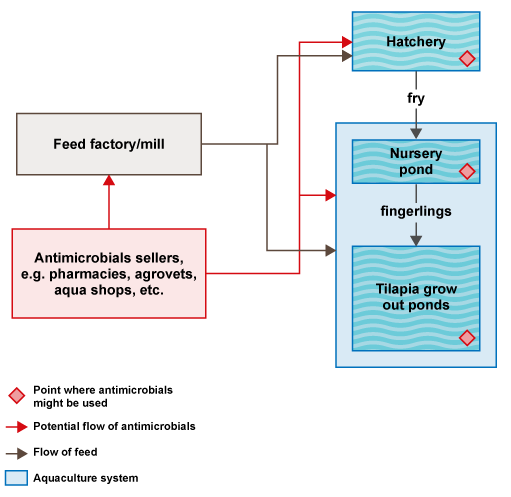1.5 Drivers of AMU
AMU and practices in food-producing animal systems are influenced by human behaviour, as shown in Figure 3. Information about the drivers and motivations for using antimicrobials in animal production systems can be helpful in planning action to reduce AMU. The details vary in different settings.
Activity 2: Understanding and reflecting on AMU in your own setting
Understanding AMU in your own setting
- Choose a food animal production system you are familiar with; for example, broiler chickens, shrimp or dairy cattle. Draw a simple diagram of this production system, outlining the production stages needed to grow the animals to food age, and add inputs to the system such as food, water and medicines.
- Indicate on your diagram where antimicrobials might be used in the system.
Note that you will need to refer this diagram in later activities.
Discussion
Figure 4 is an example of a section of a
Activity 3: Decision-making about antimicrobials in your setting
How are decisions made about AMU in your setting? Who is involved in decision-making? Are diagnostic tests used to identify the pathogen before using antimicrobials? Write your answer in the space below.
Discussion
Your answer will be specific to your setting. Ideally, a qualified animal health professional such as a veterinary surgeon should be involved in decisions about AMU. Bacterial infection should be confirmed and the bacteria would be tested for AMR before using these drugs, but this type of laboratory testing may not be undertaken in your setting.
1.4 AMU in companion animals





